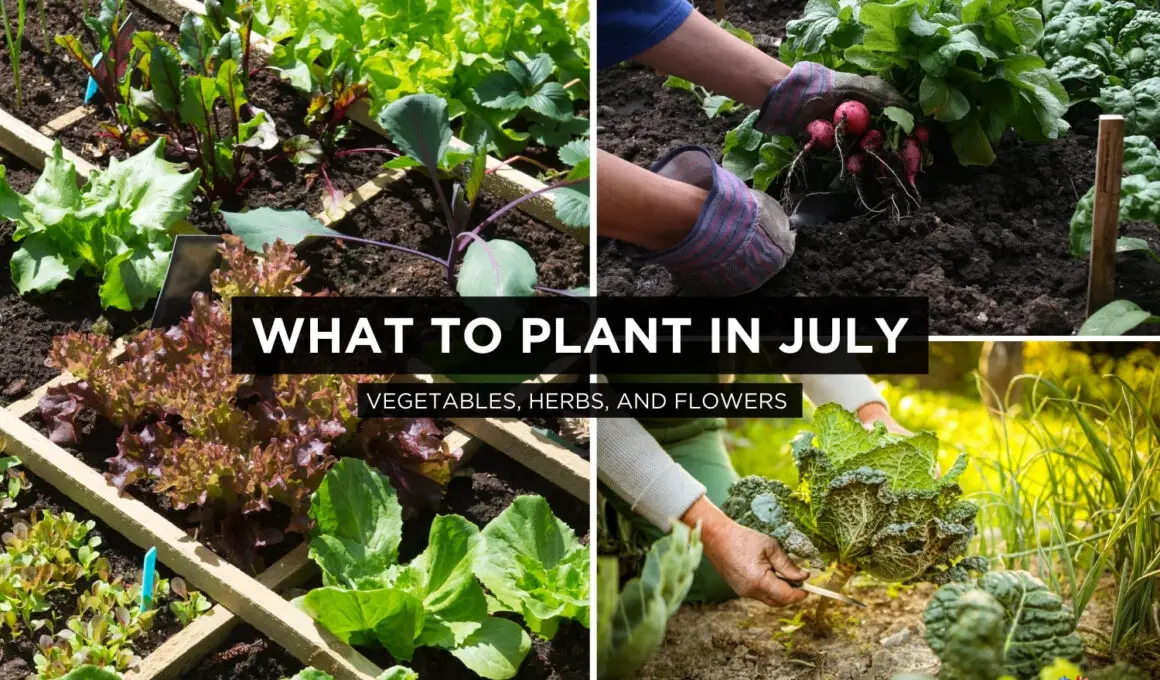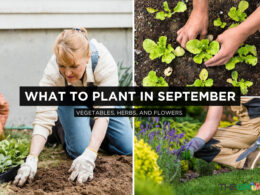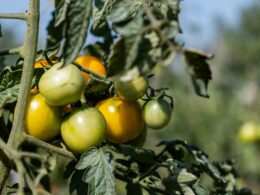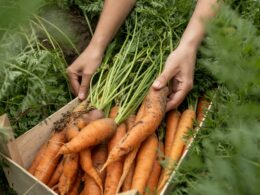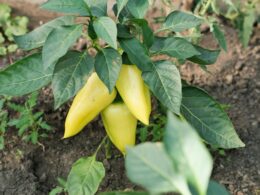In This Article Show
As we embrace the heart of summer, it’s the perfect time to expand your garden with various foods, herbs, and flowers that thrive in warm weather. Whether you’re a seasoned gardener or just starting, July offers a unique opportunity to plant a vibrant selection of crops that will enrich your garden and table.
In this post, we’ll explore 15 ideal plants to start this month, ranging from robust vegetables like tomatoes and cucumbers to fragrant herbs such as basil and cilantro, not forgetting the colorful touch of flowers like sunflowers and marigolds. Each plant choice is tailored to benefit from July’s longer days and warmer nights, making it a prime time for garden growth.
Vegetables to Plant in July
July is not too late to add vibrant vegetables to your garden. Here’s a list of veggies that not only survive but thrive during the warm midsummer climate.
1. Tomatoes
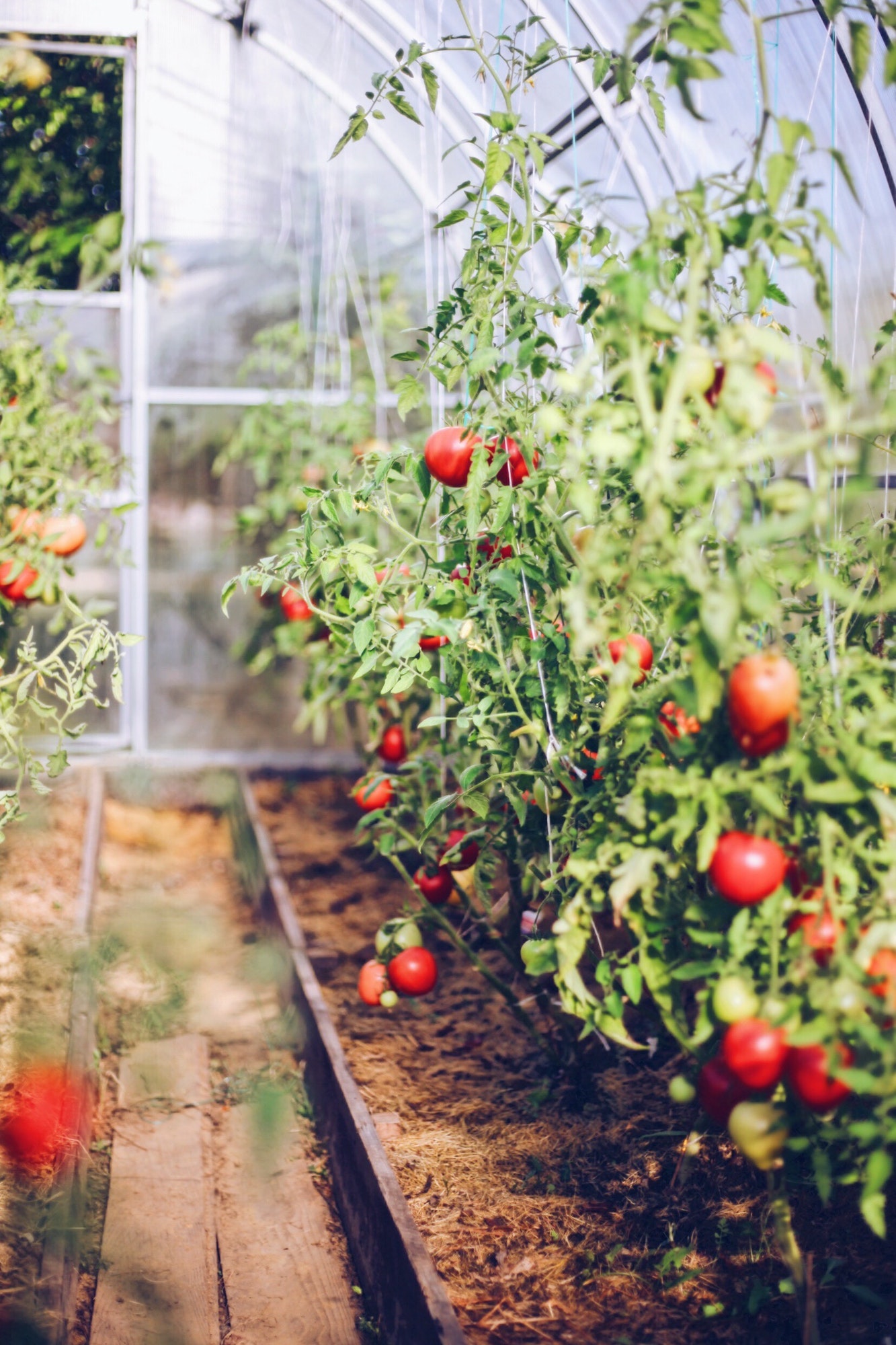
Even in July, you can still plant tomatoes for a late summer or early fall harvest. Choose heat-tolerant varieties and consider smaller or faster-maturing types like cherry tomatoes.
Ensure they get full sun—at least six hours daily—and maintain consistent watering to avoid blossom end rot. A good tip is to use mulch to retain soil moisture and cool the roots.
2. Cucumbers
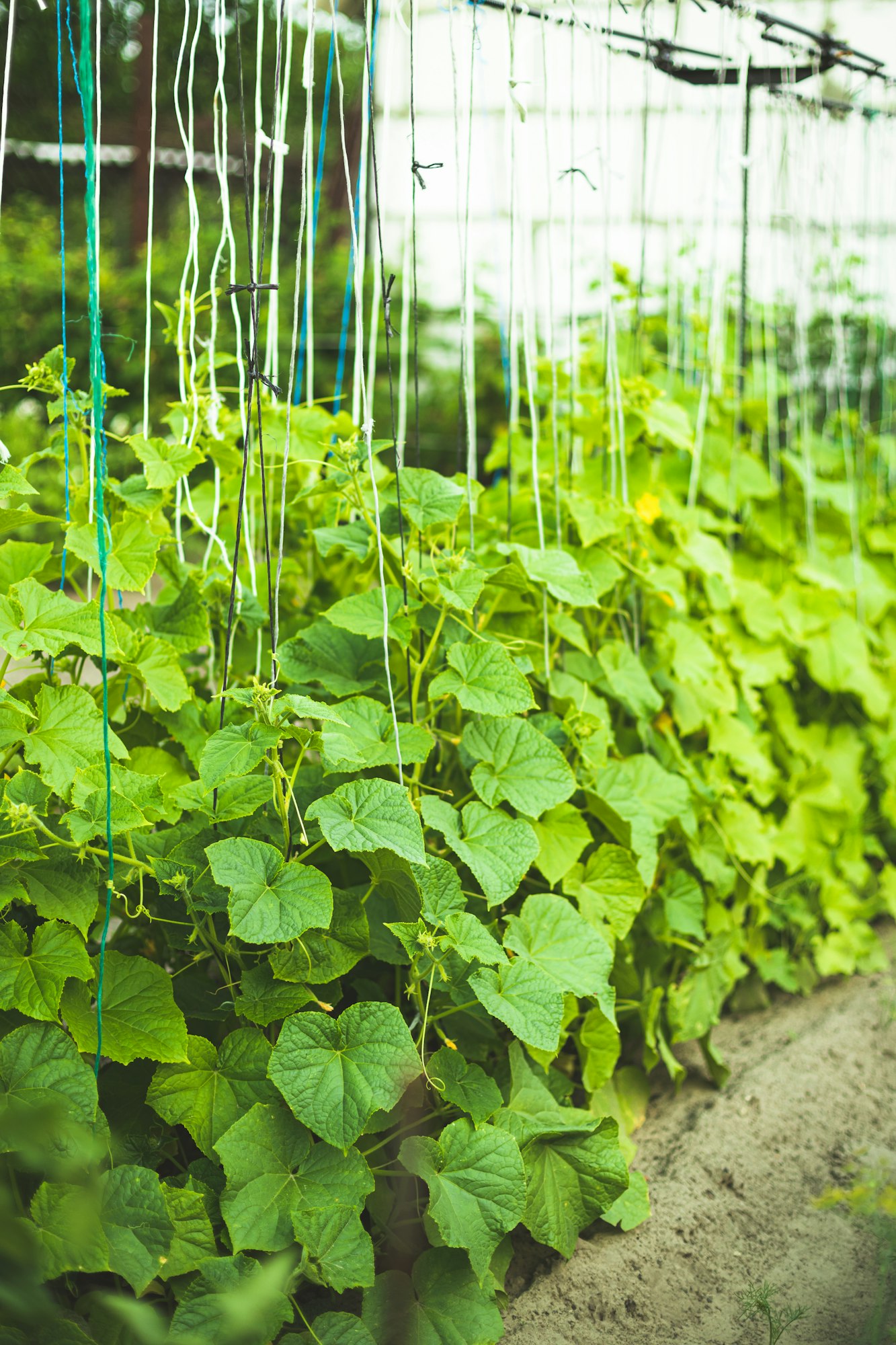
Cucumbers flourish in warm temperatures and can be a delightful addition to your July garden. They require ample space as they tend to sprawl, or you can opt for trellising to save space and promote healthier plants.
Get Gardening For Beginners
Our new EBOOK shows newcomers and green thumbs alike a step by step guide to growing the garden of their dreams.
Ensure they are planted in fertile, well-drained soil and get plenty of sunlight. Water regularly, especially during flowering and fruiting stages, to keep the cucumbers crisp and fresh.
3. Peppers
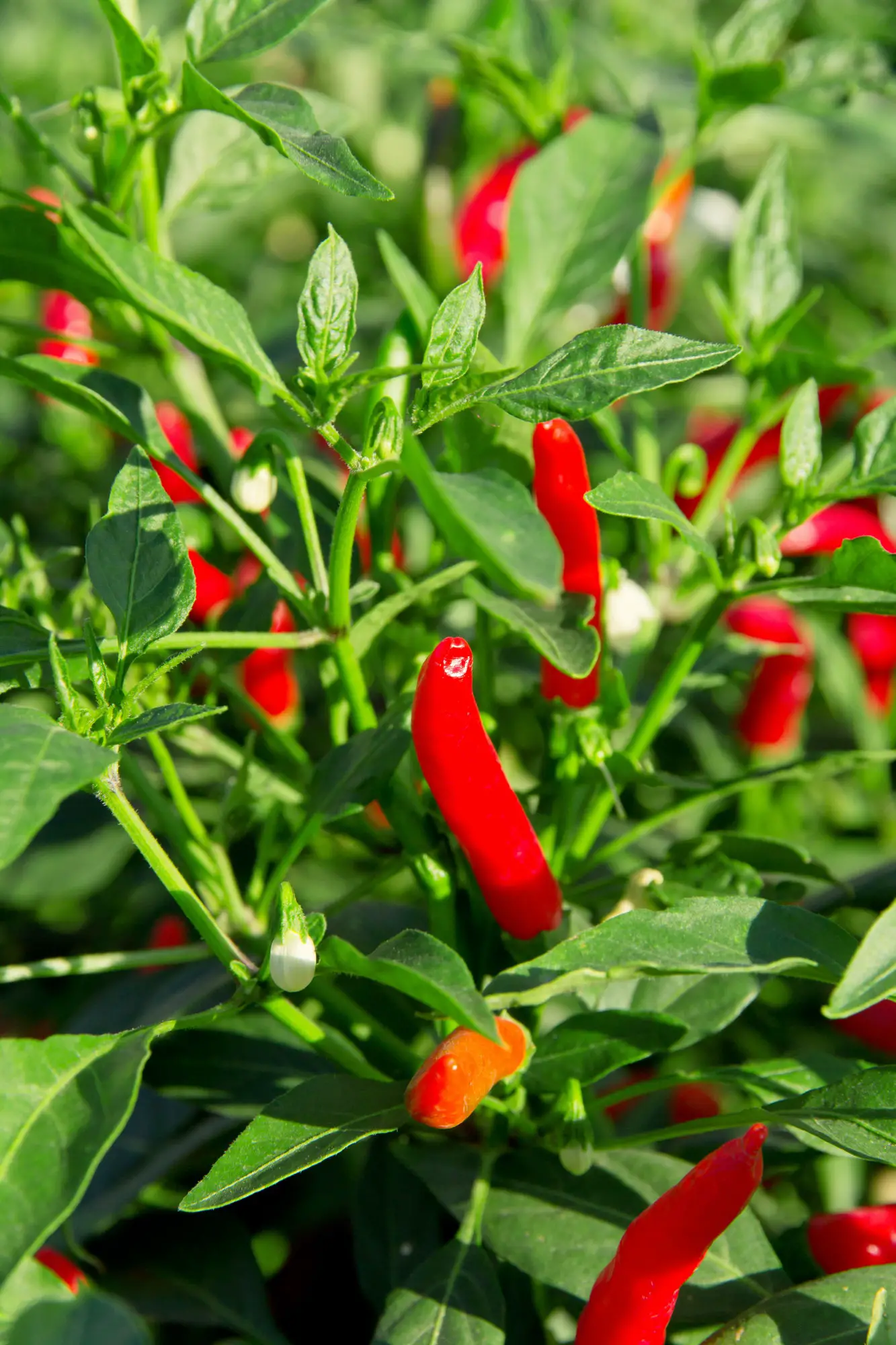
From sweet bells to fiery chilis, peppers are perfect for a July planting. They thrive in the heat, with many varieties requiring a long growing season. When planting this month, choose varieties that can handle the summer sun and still produce a good yield.
Peppers need well-drained, nutrient-rich soil and consistent moisture. Mulching helps retain soil moisture and control weeds.
4. Zucchini
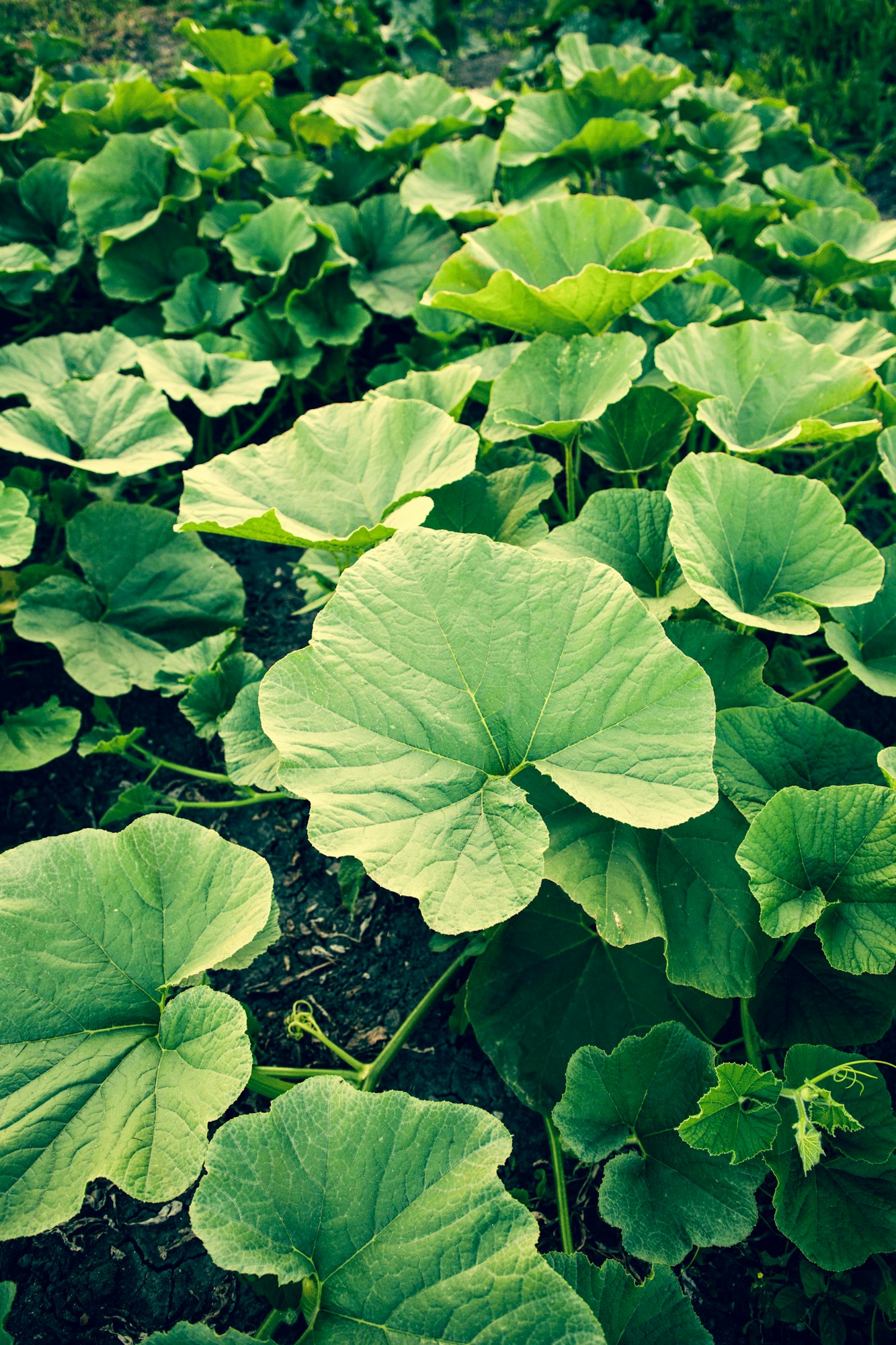
Zucchini is known for its rapid growth and high yield, making it an ideal candidate for midsummer planting. They require full sun and well-drained soil. Keep the soil consistently moist and consider using a straw mulch to maintain soil moisture and temperature. Watch out for pests like squash bugs and borers, and use organic methods such as handpicking or using insecticidal soap to manage these pests.
Herbs to Grow in July
Herbs are wonderful additions to any garden, not only for their culinary uses but also for their aromatic presence and pest-repelling properties. Here are a few herbs that are particularly well-suited for planting in July:
5. Basil

Basil thrives in the warmth of summer. For optimal growth, basil requires full sun, at least six to eight hours daily. Plant basil in well-drained soil and water regularly, ensuring the soil is moist but not soggy.
Basil benefits from being picked regularly; harvesting the tops of the shoots encourages the plant to branch out and produce more leaves.
Get Gardening For Beginners
Our new EBOOK shows newcomers and green thumbs alike a step by step guide to growing the garden of their dreams.
Basil’s lush green leaves are perfect in salads, pesto, or as a fresh garnish on many dishes, making it a must-have in your culinary garden.
6. Cilantro
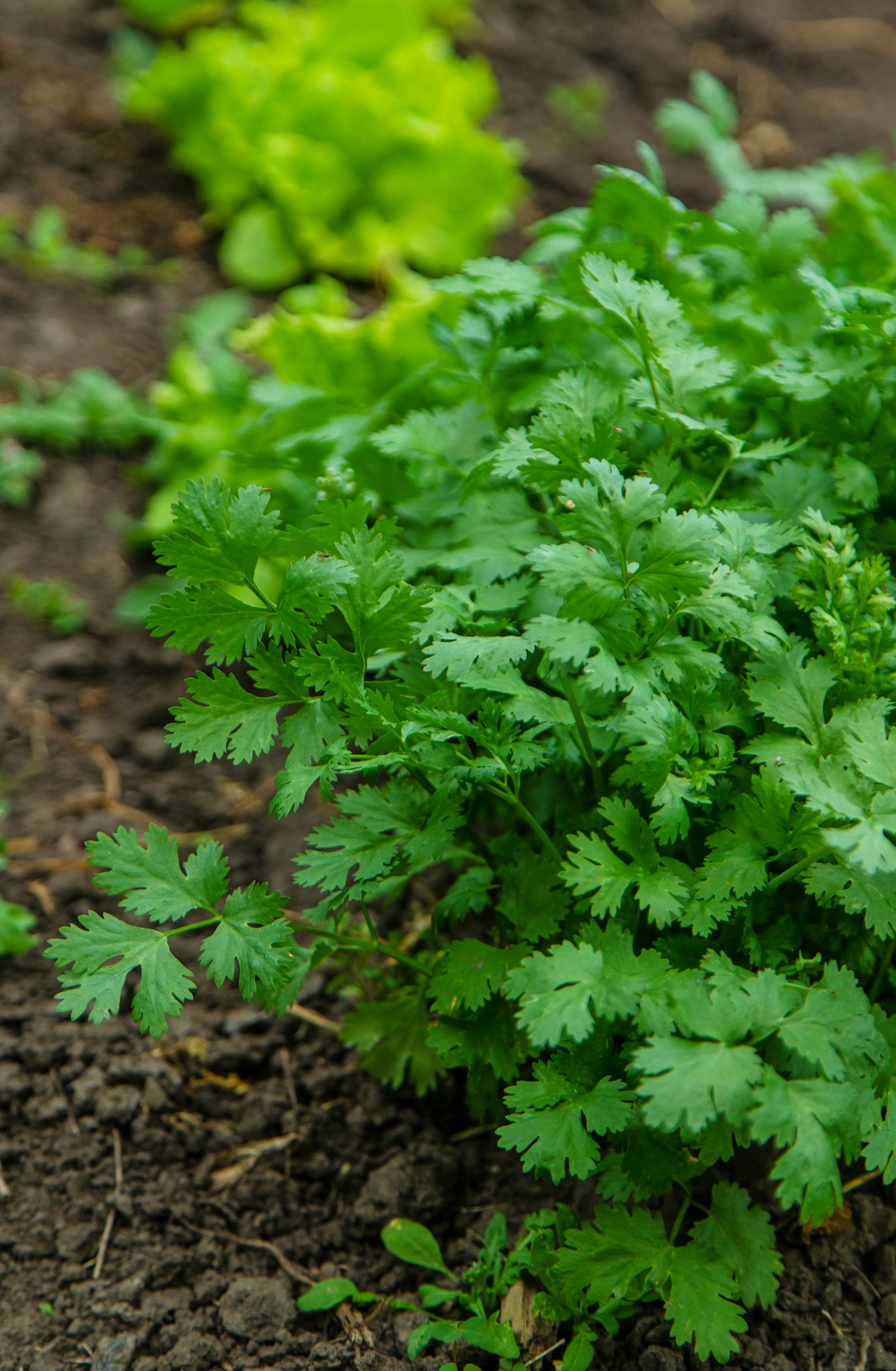
Cilantro can bolt quickly in the heat, so it’s ideal to choose slow-bolting varieties for a July planting. You can start cilantro from seeds or transplants, but ensure it has light shade during the hottest parts of the day to prevent early bolting.
Keep the soil moist and plant in a cooler part of the garden. Cilantro is great in salsas, as a topping for tacos, or mixed into salads, providing a fresh, tangy flavor.
7. Parsley
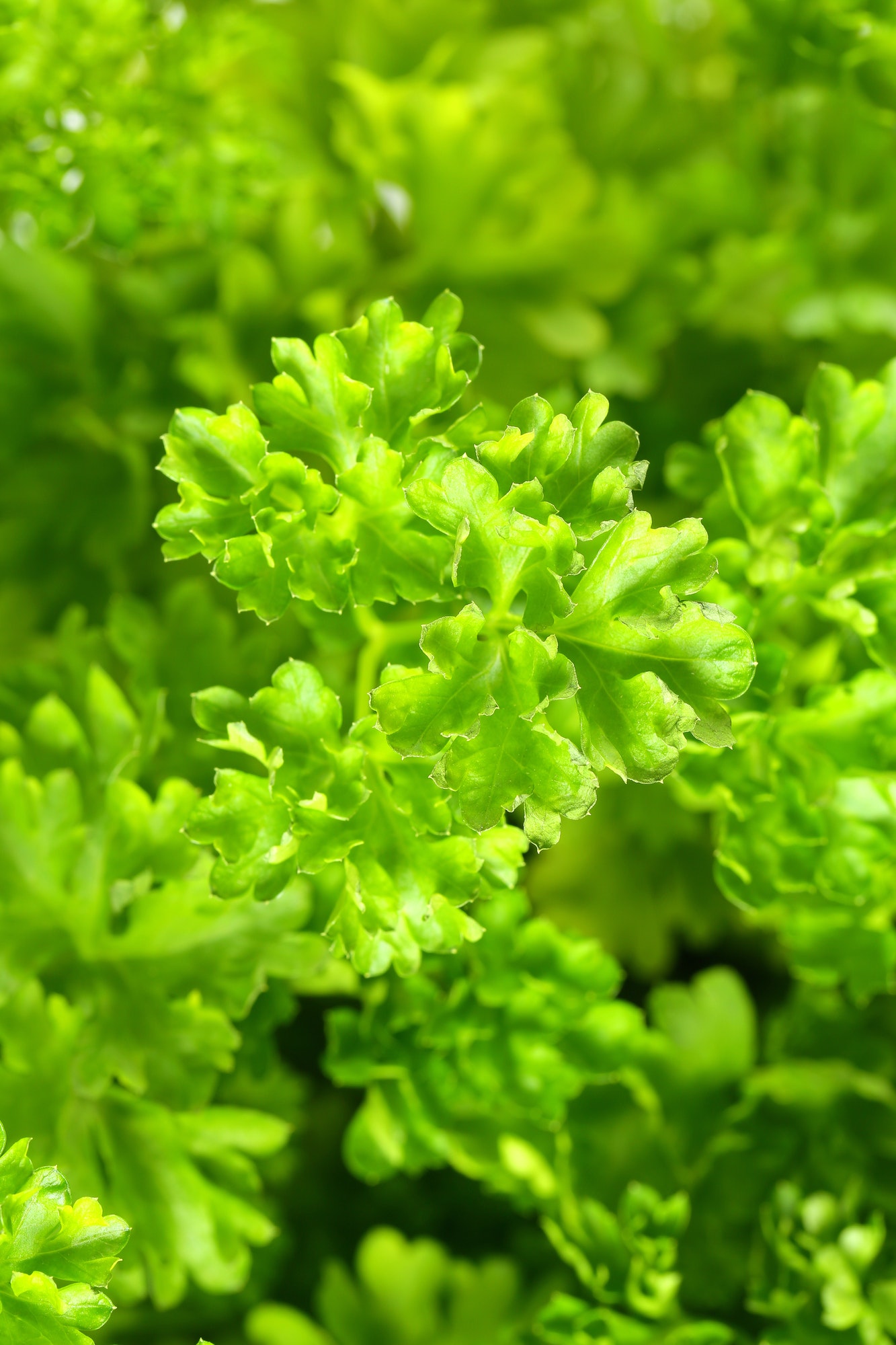
Parsley is a versatile herb that prefers cooler temperatures but can be planted in July with some care. It enjoys full sun to partial shade and rich, moist soil that drains well. Frequent harvesting encourages more growth. Parsley works beautifully as a flavor enhancer in soups, stews, and salads, and its rich green leaves also make excellent garnishes.
8. Lavender
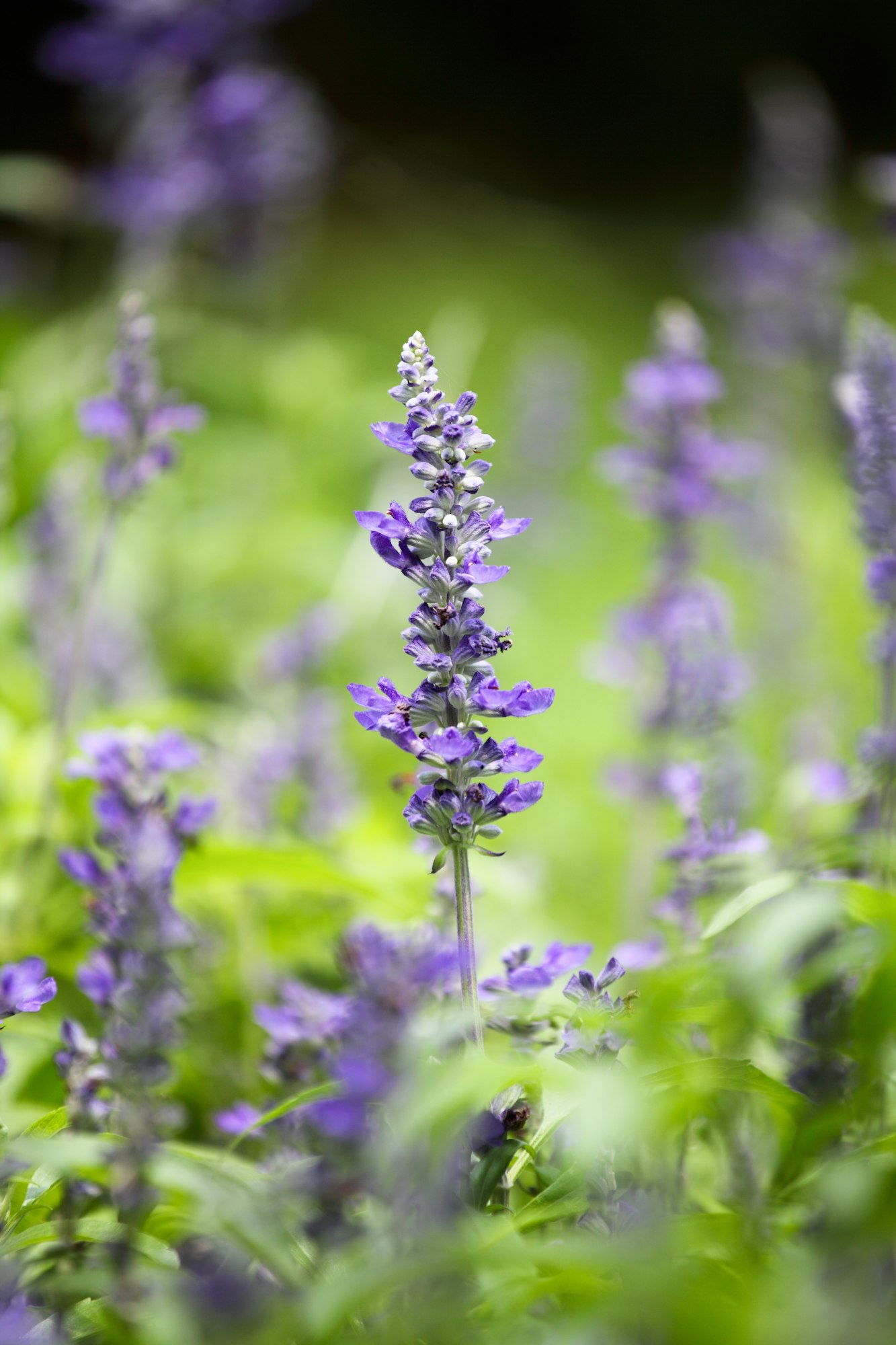
Lavender is beloved for its soothing fragrance and beautiful blooms. It thrives in full sun and requires well-drained, slightly alkaline soil. Plant lavender in raised beds or gravelly soil to ensure adequate drainage, as it does not tolerate wet roots well.
Lavender prefers warm and dry climates but can also be grown in cooler areas if protected from harsh winter winds and excessive moisture. Once established, lavender needs little water and minimal care, making it an excellent choice for low-maintenance gardens.
9. Rosemary

Rosemary is another hardy perennial that adds both culinary and ornamental value to your garden. It prefers full sun and well-drained soil. When watering rosemary, allow the soil to dry out between watering, as it is drought-tolerant once established.
Prune regularly to encourage bushy growth and prevent the plant from becoming leggy. Rosemary can be pruned into decorative shapes and is perfect for borders or as a fragrant addition to herb gardens.
Flowers to Start in July
Adding flowers to your garden not only enhances its beauty but also supports local pollinators. Here are three types of flowers that are perfect for planting in July:
10. Sunflowers
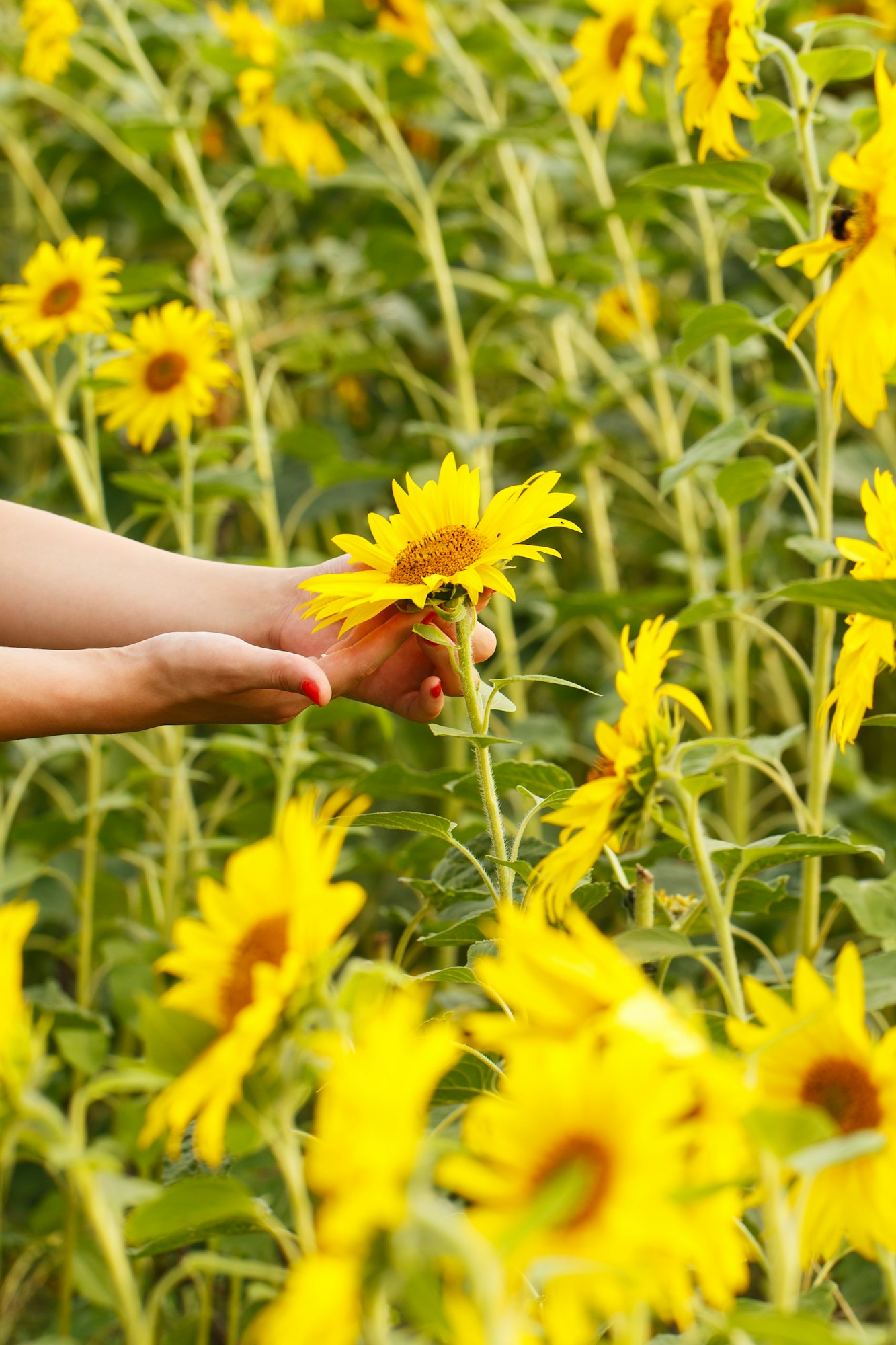
Sunflowers are not just striking; they’re also remarkably easy to grow. They need a spot in full sun with well-drained soil. When planting sunflowers, space them according to their variety—giant types might need 2 to 3 feet between plants, while smaller varieties can be spaced closer.
Water them regularly, especially during growth periods and dry spells, to ensure deep root development. Choose a variety based on your space and height preference, ranging from towering giants to shorter, bushier types that are perfect for borders.
11. Marigolds
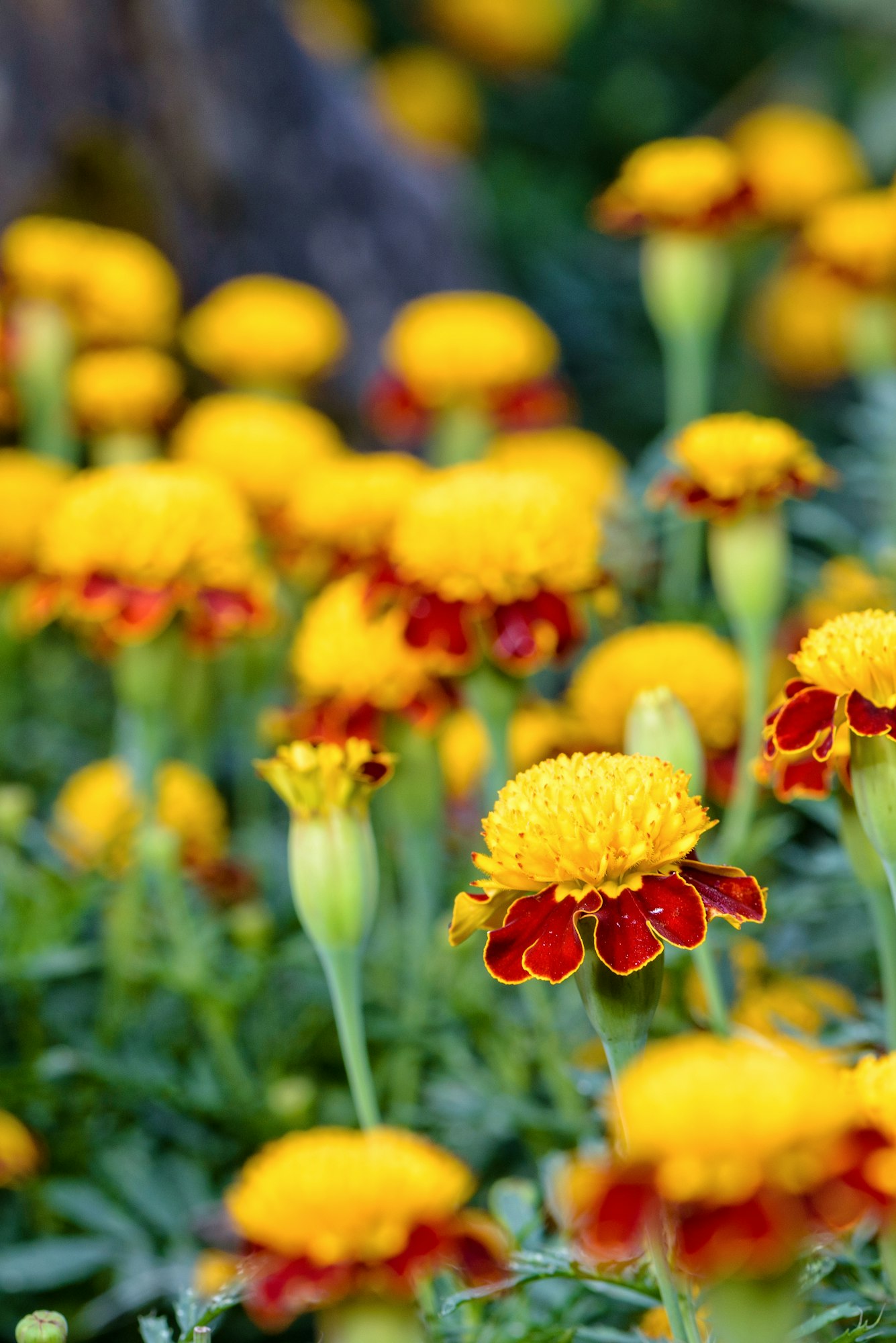
Marigolds are excellent for companion planting due to their ability to repel pests and attract beneficial insects. They thrive in sunny spots with well-drained soil. You can plant marigolds directly in the ground or pots, spacing them about 8-12 inches apart depending on the variety.
Water at the base to keep the foliage dry and prevent mildew. Marigolds are particularly beneficial when planted near tomatoes and peppers, as they help deter common garden pests.
12. Petunias
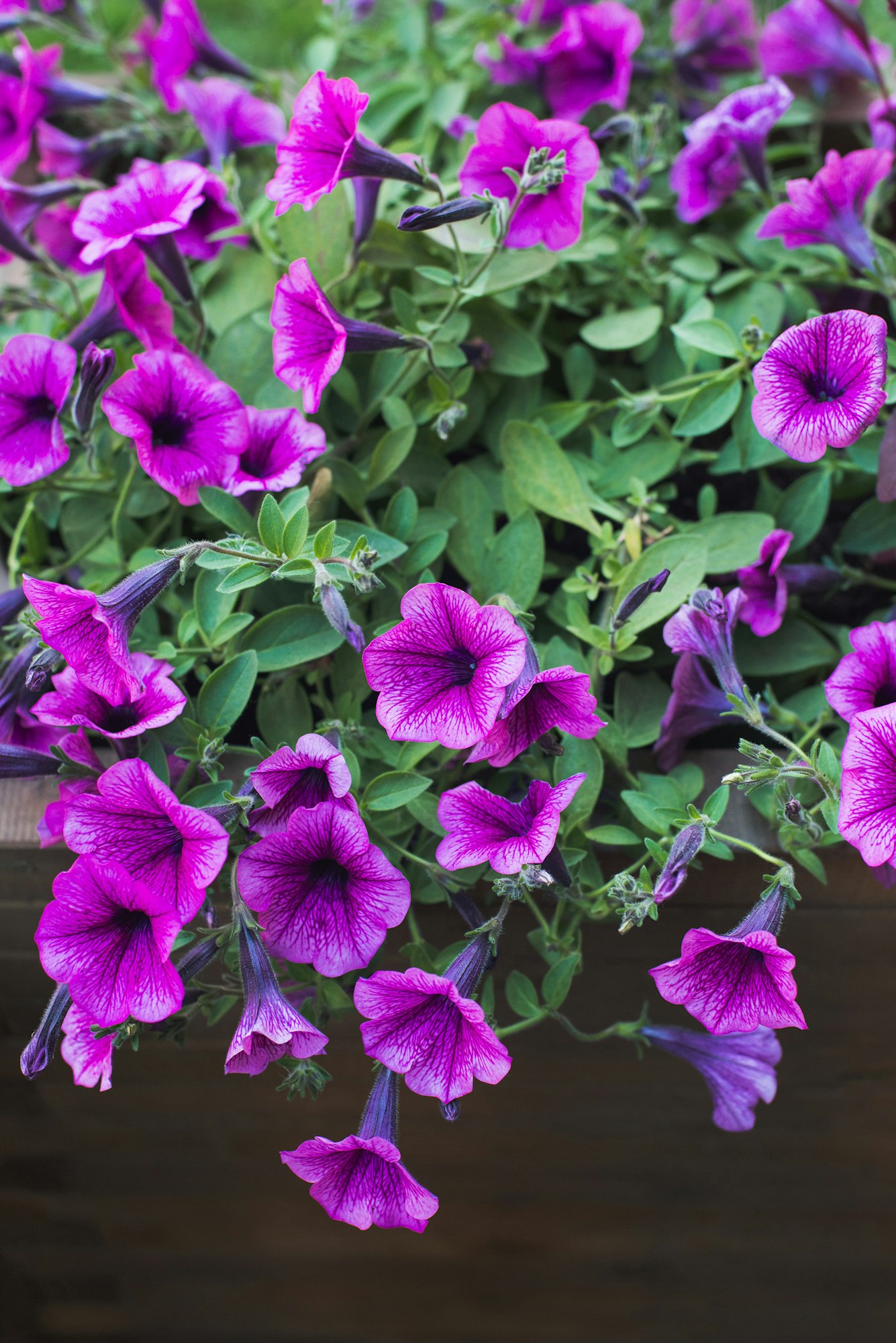
Petunias are perfect for container gardening and can add a splash of color throughout the summer and into the fall. Choose a container with adequate drainage holes, and use a well-draining potting mix. Place petunias in a spot that receives at least five to six hours of sunlight daily.
Keep the soil moist but not waterlogged, and deadhead regularly to encourage more blooms. For maintenance, apply a balanced liquid fertilizer every few weeks to support their prolific flowering.
13. Cosmos
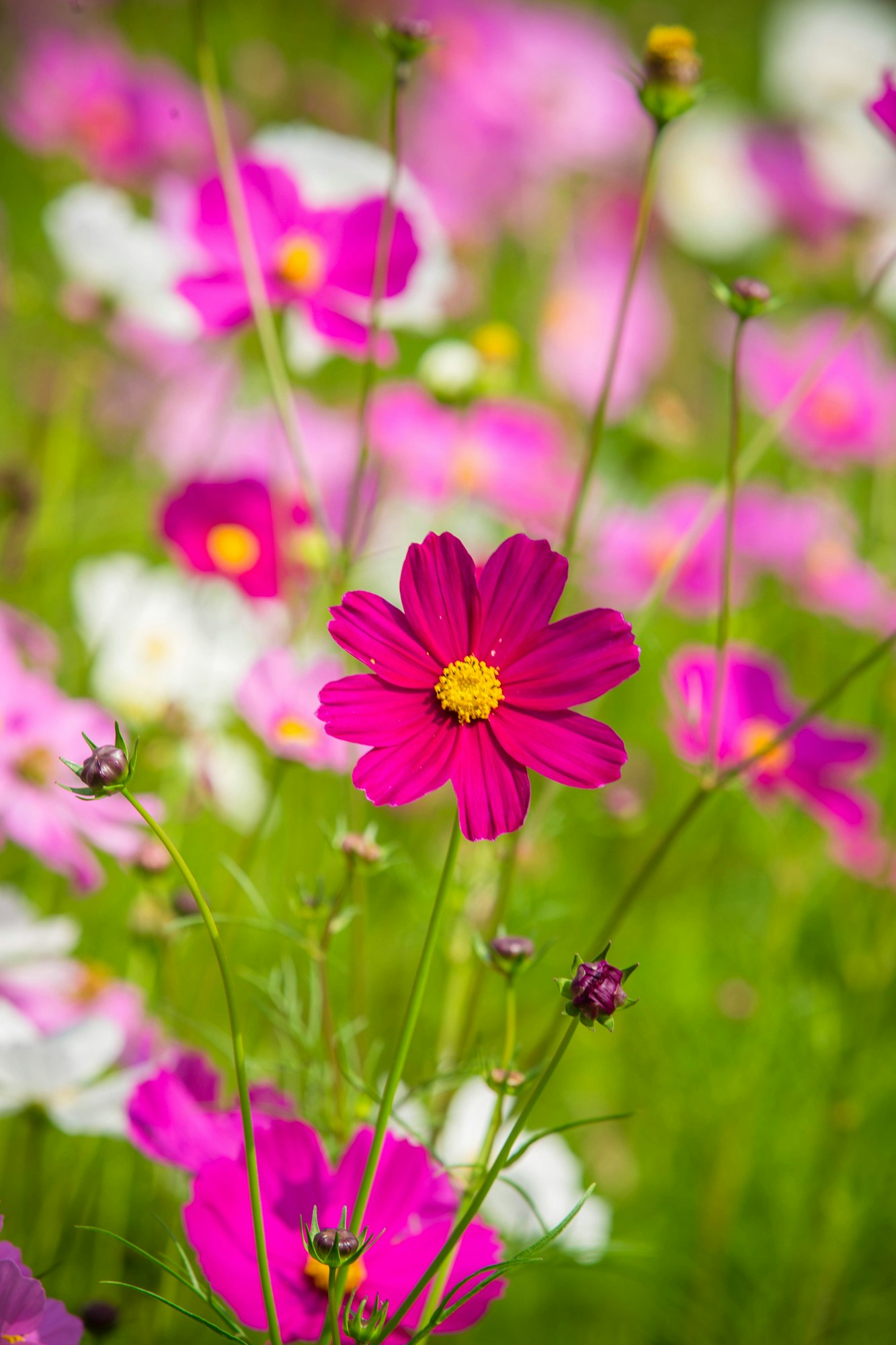
Cosmos are vibrant and quick to bloom, making them an ideal choice for adding a splash of color to the summer garden. They thrive in full sun and prefer well-drained soil. Cosmos seeds can be sown directly into the garden in July, as they germinate quickly in warm soil.
These flowers are drought-tolerant once established and require minimal care beyond occasional watering during dry spells. Deadhead spent blooms to encourage continuous flowering throughout the season.
14. Black-eyed Susan
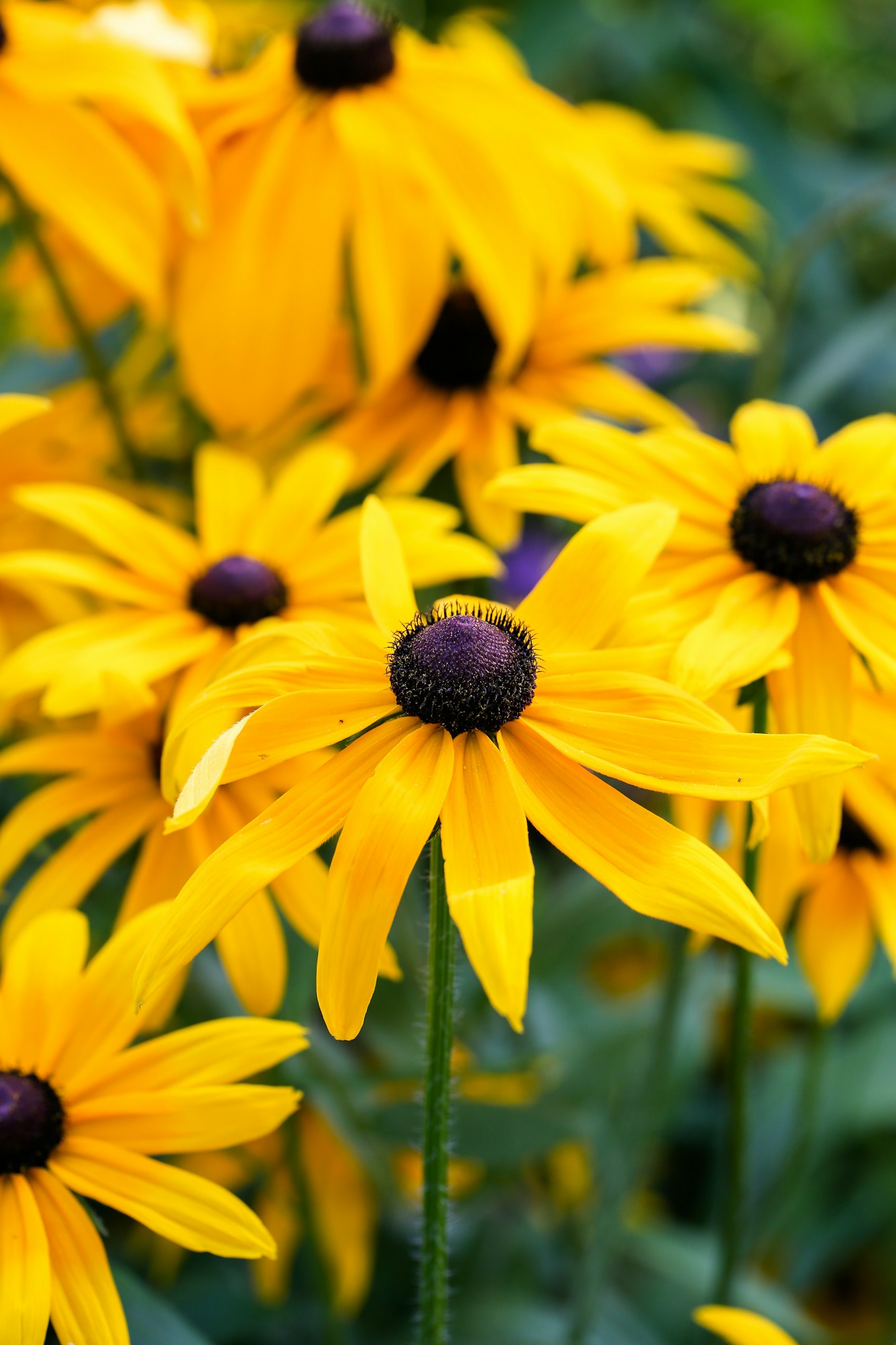
Black-eyed Susans are tough, native perennials that bring a bright, cheerful look to any garden. They prefer full sun but can tolerate partial shade, and they thrive in average, well-drained soil. Plant them in July to enjoy their golden-yellow flowers by late summer.
These plants are excellent for attracting butterflies and other pollinators, making them a beneficial addition to any garden. Once established, Black-eyed Susans are quite drought-resistant and will reseed themselves, providing beauty for years to come.
15. Coneflowers
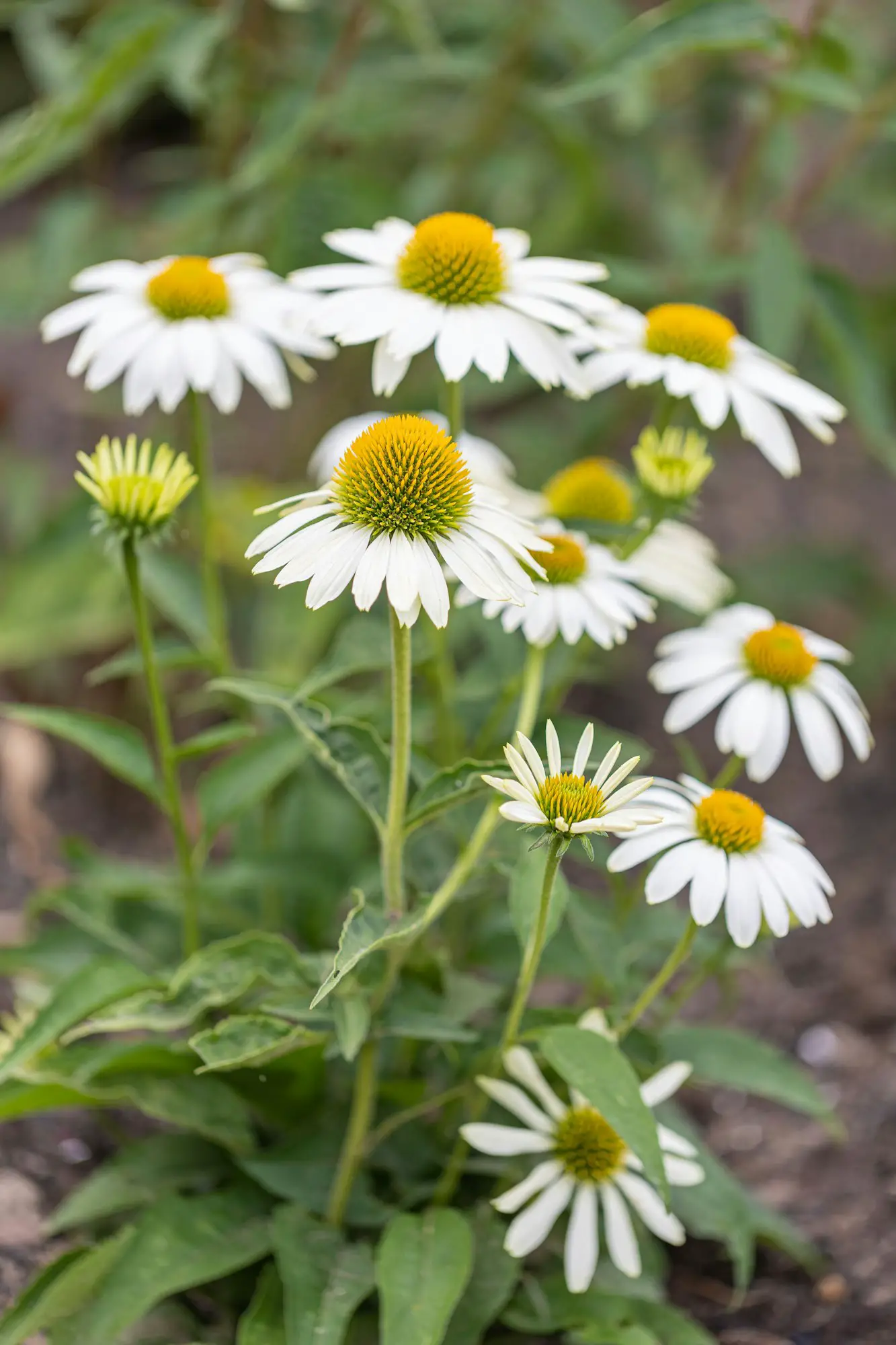
Coneflowers, or Echinacea, are known for their hardiness and the striking appearance of their daisy-like blooms. They prefer full sun and well-drained soil. Planting coneflowers in July allows them to establish before the winter, and they will start blooming the following summer.
They are drought-tolerant once established and attract a variety of pollinators, including bees and butterflies. Coneflowers are available in a range of colors from pink and purple to red and yellow, allowing for versatile design options in your garden.





